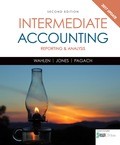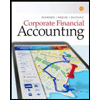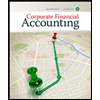
Concept explainers
1.
Calculate the cost of ending inventory under FIFO cost flow using retail inventory method.
1.
Explanation of Solution
Retail inventory method: It takes into account all the retail amounts that is, the current selling prices. Under this method, the goods available for sale, at retail is deducted from the sales, at retail to determine the ending inventory, at retail.
Conventional Retail Method: Conventional retail method refers to the estimation of the lower of average cost or market by eliminating the markdowns from the calculation of the cost-to-retail percentage.
In this case, the cost-to-retail percentage will be determined by dividing the goods available for sale at cost by the goods available for at retail (excluding markdowns). Thus, the conventional retail method will always result in lower estimation of ending inventory when the markdowns exist.
FIFO: Under this inventory method, the units that are purchased first are sold first. Thus, it starts from the selling of the beginning inventory, followed by the units purchased in a chronological order of their purchases took place during a particular period.
Calculate the cost of ending inventory by the retail method using FIFO cost flow:
| Ending Inventory - FIFO | ||
| Details | Cost ($) | Retail ($) |
| Purchases | 140,000 | 190,000 |
| Less: Purchases discount taken | (3,000) | 0 |
| Purchases returns | (5,000) | (8,000) |
| Freight -in | 20,000 | 0 |
| Net additional markups | 0 | 40,000 |
| Net markdowns | 0 | (12,000) |
| Goods available for sale after markdowns | 152,000 | 210,000 |
| Add: Beginning inventory | 29,000 | 45,000 |
| Goods available for sale | 181,000 | 255,000 |
| Less: Net sales | (190,000) | |
| Employee discounts | (3,000) | |
| Ending inventory at retail | $62,000 | |
| Ending inventory at cost | $44,888 | |
Table (1)
Working note 1:
Calculate the amount of net additional markups:
Working note 2:
Calculate the amount of net additional markdowns:
Working note 3:
Calculate ending inventory at cost:
Step 1: Calculate cost-to-retail ratio.
Step 2: Calculate ending inventory at cost.
Therefore, the cost of ending inventory by the retail method using FIFO cost flow is $44,888.
2.
Calculate the cost of ending inventory under average cost flow using retail inventory method.
2.
Explanation of Solution
Average cost method: Under this method, the cost of the goods available for sale is divided by the number of units available for sale during a particular period.
Calculate the cost of ending inventory by the retail method using average cost flow:
| Ending Inventory - Average Cost | ||
| Details | Cost ($) | Retail ($) |
| Beginning inventory | 29,000 | 45,000 |
| Purchases | 140,000 | 190,000 |
| Less: Purchases discount taken | (3,000) | 0 |
| Purchases returns | (5,000) | (8,000) |
| Freight -in | 20,000 | 0 |
| Net additional markups | 0 | 40,000 |
| Net markdowns | 0 | (12,000) |
| Goods available for sale after markdowns | 181,000 | 255,000 |
| Less: Net sales | (190,000) | |
| Employee discounts | (3,000) | |
| Estimated ending inventory at retail | $62,000 | |
| Estimated ending inventory at cost | $44,020 | |
Table (2)
Working note 1:
Calculate ending inventory at cost:
Step 1: Calculate cost-to-retail ratio.
Step 2: Calculate ending inventory at cost.
Therefore, the cost of ending inventory by the retail method using average cost flow is $44,020.
3.
Calculate the cost of ending inventory under LIFO cost flow using retail inventory method.
3.
Explanation of Solution
LIFO: Under this inventory method, the units that are purchased last are sold first. Thus, it starts from the selling of the units recently purchased and ending with the beginning inventory.
Calculate the cost of ending inventory by the retail method using LIFO cost flow:
| Ending Inventory - LIFO | ||
| Details | Cost ($) | Retail ($) |
| Beginning inventory | 29,000 | 45,000 |
| Purchases | 140,000 | 190,000 |
| Less: Purchases discount taken | (3,000) | 0 |
| Purchases returns | (5,000) | (8,000) |
| Freight -in | 20,000 | 0 |
| Net additional markups | 0 | 40,000 |
| Net markdowns | 0 | (12,000) |
| Goods available for sale after markdowns | 152,000 | 210,000 |
| Goods available for sale | 181,000 | 255,000 |
| Less: Net sales | (190,000) | |
| Employee discounts | (3,000) | |
| Estimated ending inventory at retail | $62,000 | |
| Estimated ending inventory at LIFO cost: | ||
| Beginning layer | 29,000 | |
| New layer | 12,308 | |
| Total cost | $41,308 | |
Table (3)
Working note 1:
Calculate ending inventory at cost for beginning layer:
Step 1: Calculate cost-to-retail ratio (Beginning layer).
Step 2: Calculate ending inventory at cost (Beginning layer).
Working note 2:
Calculate ending inventory at cost for new layer:
Step 1: Calculate cost-to-retail ratio (new layer).
Step 2: Calculate ending inventory at cost (new layer).
Therefore, the cost of ending inventory by the retail method using LIFO cost flow is $41,308.
4.
Calculate the cost of ending inventory under lower of cost or market rule cost flow using retail inventory method.
4.
Explanation of Solution
Lower-of-cost-or-market: The lower-of-cost-or-market (LCM) is a method which requires the reporting of the ending merchandise inventory in the financial statement of a company, either at current market value or at historical cost price of the inventory, whichever is less.
Calculate the cost of ending inventory by the retail method using lower of cost or market rule:
| Ending Inventory - LCM | ||
| Details | Cost ($) | Retail ($) |
| Beginning inventory | 29,000 | 45,000 |
| Purchases | 140,000 | 190,000 |
| Less: Purchases discount taken | (3,000) | 0 |
| Purchases returns | (5,000) | (8,000) |
| Freight -in | 20,000 | 0 |
| Net additional markups | 0 | 40,000 |
| Goods available for sale before markdowns | 181,000 | 267,000 |
| Less: Net markdowns | (12,000) | |
| Net sales | (190,000) | |
| Employee discounts | (3,000) | |
| Estimated ending inventory at retail | $62,000 | |
| Estimated ending inventory at cost (LCM) | $42,036 | |
Table (4)
Working note 1:
Calculate ending inventory at cost:
Step 1: Calculate cost-to-retail ratio.
Step 2: Calculate ending inventory at cost.
Therefore, the cost of ending inventory by the retail method using LCM cost flow is $42,036.
Want to see more full solutions like this?
Chapter 8 Solutions
EBK INTERMEDIATE ACCOUNTING: REPORTING
- I need help with this financial accounting problem using accurate calculation methods.arrow_forwardPlease provide answer this general accounting questionarrow_forwardPremier Lighting Co. shows Merchandise Inventory of $35,000. Based on a count taken on December 31, merchandise inventory at the end of the year actually totaled $28,000. The adjusting entry to remove the old merchandise inventory balance would be: A)a debit to Income Summary of $28,000 and a credit to Merchandise Inventory for The adjusting entry to remove the old merchandise inventory balance would be:arrow_forward
 Intermediate Accounting: Reporting And AnalysisAccountingISBN:9781337788281Author:James M. Wahlen, Jefferson P. Jones, Donald PagachPublisher:Cengage LearningPrinciples of Accounting Volume 1AccountingISBN:9781947172685Author:OpenStaxPublisher:OpenStax College
Intermediate Accounting: Reporting And AnalysisAccountingISBN:9781337788281Author:James M. Wahlen, Jefferson P. Jones, Donald PagachPublisher:Cengage LearningPrinciples of Accounting Volume 1AccountingISBN:9781947172685Author:OpenStaxPublisher:OpenStax College Cornerstones of Financial AccountingAccountingISBN:9781337690881Author:Jay Rich, Jeff JonesPublisher:Cengage Learning
Cornerstones of Financial AccountingAccountingISBN:9781337690881Author:Jay Rich, Jeff JonesPublisher:Cengage Learning Financial Accounting: The Impact on Decision Make...AccountingISBN:9781305654174Author:Gary A. Porter, Curtis L. NortonPublisher:Cengage Learning
Financial Accounting: The Impact on Decision Make...AccountingISBN:9781305654174Author:Gary A. Porter, Curtis L. NortonPublisher:Cengage Learning Corporate Financial AccountingAccountingISBN:9781305653535Author:Carl Warren, James M. Reeve, Jonathan DuchacPublisher:Cengage Learning
Corporate Financial AccountingAccountingISBN:9781305653535Author:Carl Warren, James M. Reeve, Jonathan DuchacPublisher:Cengage Learning Corporate Financial AccountingAccountingISBN:9781337398169Author:Carl Warren, Jeff JonesPublisher:Cengage Learning
Corporate Financial AccountingAccountingISBN:9781337398169Author:Carl Warren, Jeff JonesPublisher:Cengage Learning





